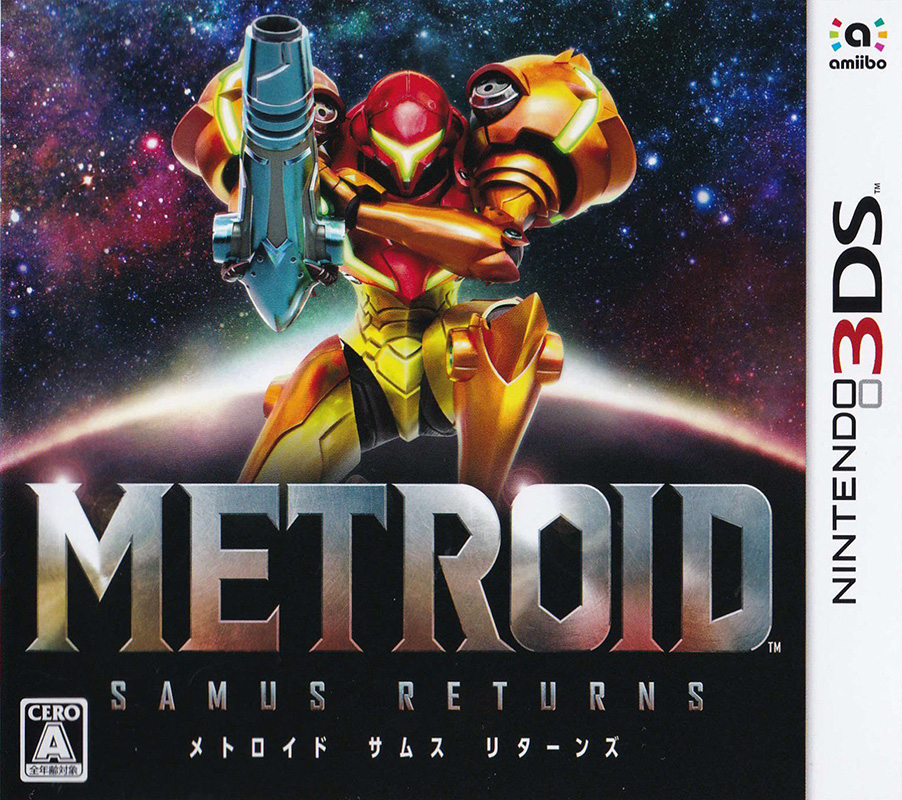 Review by: Matthew Sharonlover Sharpe
Review by: Matthew Sharonlover Sharpe
Original Publish Date: 10/30/2017
Final rating: “Nintendo really came out swinging and went all in on one of their most underutilized franchises in their arsenal.”
 Welcome to my inaugural review of a Metroid title. Hopefully you are able to glean some useful information from my review and I hope to bring more to the page.
Welcome to my inaugural review of a Metroid title. Hopefully you are able to glean some useful information from my review and I hope to bring more to the page.
Story:
One thing I have always loved about the Metroid series are the games that use less textual dialogue and less voice acting and leaving the player to fill in the blanks on our heroine Samus. Being able to weave a tale through gameplay, environment, sound effects, and music are one of the things that helped build my love for the Metroid franchise from what seems like eons ago. There isn’t much to tell with regards to the story, it is pretty straight forward but I will run it down below. Please note that if you don’t want to be spoiled, please move on to the game play section now.
Samus is dispatched to planet SR-388 in order to eradicate the Metroid species for the good of the galaxy. During her mission she encounters several new evolutions of the species with increasing difficulty before coming face to face with the Metroid Queen. While her Metroid sensor indicates the Queen as the last, Samus comes across an egg which then hatches before her eyes. The Metroid that emerges bonds with Samus, seeing her as it’s mother, it follows her around like a duckling. The end of the game has Samus returning to other areas to finish cleaning up item collection until you return to your ship for one final fight.
This is where the story extends. In the original Metroid II: Return of Samus, the game ends after the hatchling is found. Here; however, Samus encounters her arch-nemesis Ridley. Ridley attempts to kidnap the hatchling and a battle ensues. Upon defeat, Samus leaves a beaten Ridley on the ground and flies off. For those who have played the original trilogy, we are left to assume she flies directly to the Ceres Space Station where Super Metroid starts. Personally, I could have lived with just a classic remake…the addition of the Ridley fight in my opinion just wasn’t necessary and was more so just fan service.
Credits roll, completion time appear with your ending, and finally a short cutscene which pays tribute to Metroid Fusion.
Gameplay:
If there is one thing I would have to say about the gameplay, is get ready for death, lots and lots of death, at least on your first playthrough. The first thing that came to mind after my first dozen or so deaths was that I was going to be playing a Dark Souls type of hard game where I would have to learn patterns and memorize things, thankfully, while the constant deaths continued, that’s about all the parallel with the Dark Soul series that came through. Difficulty, even on normal mode, requires plenty of patience as you traverse the caverns of SR-388. A plethora of save stations and auto-save spots before many fights help to make the deaths not hurt as much as you sometimes believe they will.
The game play is smooth and the controls work well with the pace of the game. Utilizing familiar controls for missiles and spider balling helped to ease into new abilities as they were found. Among controls, the more annoying aspect of them was the controls for the new Aeon abilities as switching abilities via the directional pad seemed clunky and cumbersome. Other than that, controlling Samus seems fairly fluid.
Beyond a wide variety of classic abilities and weaponry, the addition of Aeons overall seemed like abilities that should have always been there and flow well with the gameplay without having to over utilize them striking a great balance between all of the abilities.
Graphics:
MSR at first had me worried with the initial images that came out from E3; however, after getting the game and turning on the 3D, MSR truly becomes a magnificent piece of art intertwining motion backgrounds and impressive 3D in some of the better 3D I’ve seen in a 3DS game. The ability to control the depth with the 3DS slider allowed me to select a comfortable 3D view that didn’t strain my eyes and kept the feel of large cavernous spaces. Character models were well done and do an excellent job of bringing the classic creatures of M:ROS to the 3DS in updated graphics.
The addition of a map in this remake has some things to be desired, such as better icon representation. There were many times I’d get a new ability, back track based on the icon I thought something was, only to arrive and realize I had read it wrong. The ability to zoom in on the map would have been a nice addition as the small pixels representing the various icons at times were too small to make out, maybe just a problem with my old eyes.
Audio:
The music right from the beginning hit every nostalgia chord in me, starting with the opening intro story which reprised the Super Metroid intro theme to the ending credits. The musical score is rich and powerful when it needs to be and subtle and terrifying in others, doing what a Metroid title does best, creating a believable atmosphere that one can easily get lost in.
Overall:
Overall, Metroid: Samus Returns is a full-on blast of nostalgia for the classic Metroid fan, re-introducing the player to one of the most often forgotten games in the series. While a fan made game like AM2R does an excellent job creating a similar feel, Nintendo really came out swinging and went all in on one of their most underutilized franchises in their arsenal. MSR proves that a side scrolling action-adventure game like Metroid which can tell a story with its immersive atmosphere, eerie musical score, and lack of voice acting is still relevant in a gaming world dominated by First Person Shooters and vocal/dialogue driven cinema like games such as Tomb Raider and Uncharted.
MSR will be a game that you will play through at least 2 or 3 times if only to do the other thing that Metroid games do best, challenge you to beat your own time in the infamous speed runs that Metroid games are known for or to push for that 100% run (which for the record has no bearing on your ending, just time counts).
